Webster Tank, 1936
1234
1234
|
I'm bidding on another eBay photo: http://www.ebay.com/itm/Railroad-Photo-Frisco-CO-Water-Tank-on-Colorado-Southern-Line-in-1936-/112204337216?hash=item1a1fe65040:g:2VEAAOSw0OBYKdSD
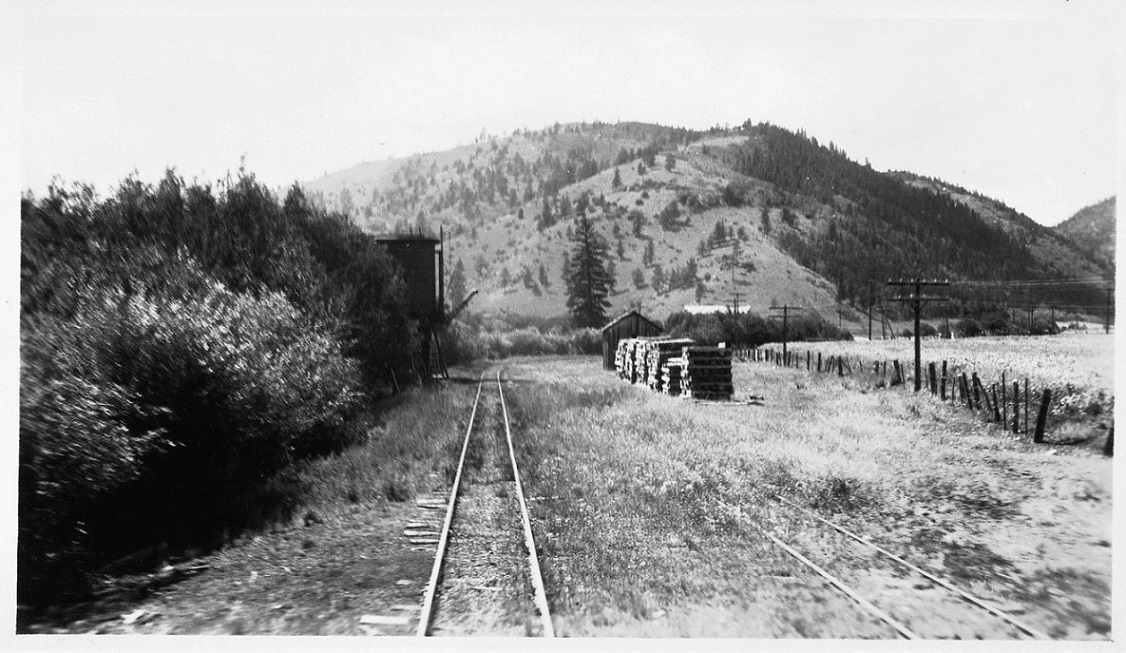 The photo is mislabeled as "Frisco Water Tank", but the location is obviously Webster, likely taken from the rear platform of the eastbound passenger train. The grade to Kenosha is faintly visible above the stacked ties. The last time I drove through Webster, the support posts for the tank were still standing, surrounded by the same type of bushes. Are those Jeff's river willows?
Jim Courtney
Poulsbo, WA |
|
This post was updated on .
In studying the photo above, the little frame structure beyond the stacked ties seemed too small to be the original depot here. I thought maybe it was a tool house.
I consulted two different versions of C&S valuation maps, only to find one other structure at Webster, besides the water tank. One map identified it as the "freight house", implying that it was not a functioning depot. 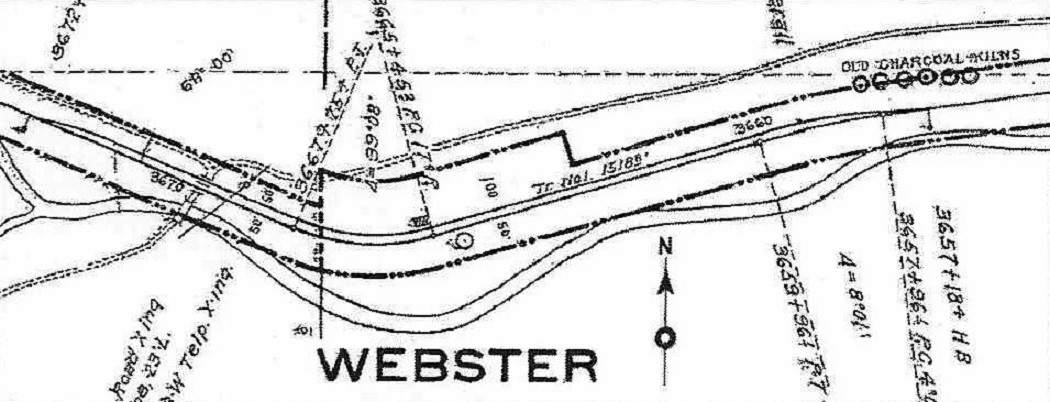 In the Klingers' C&S Platte Canon Memories . . . there are two photos of Webster in the late 1920s: 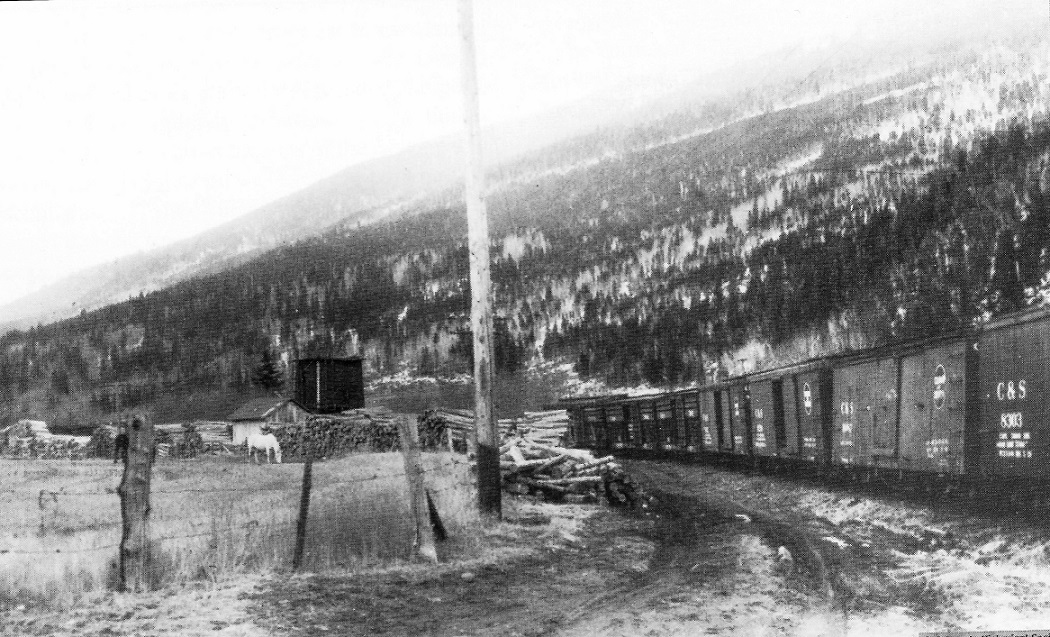 November 8, 1928. Colorado Historical Society, Whatley Collection, F-31541. The water tank is in good repair, the "freight house" not so much. Nice horse among the mine props and ties. 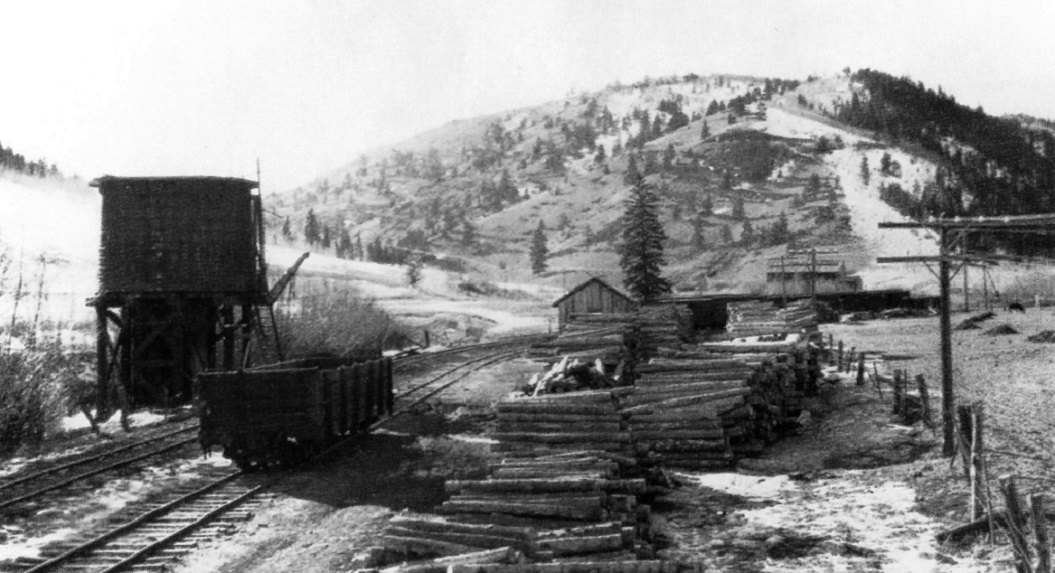 January 13, 1929. Colorado Historical Society, Whatley Collection, #31539. Given the date, this may be one of the Denver Water Board Special photographs. Not near as many bushes around the tank. Anyone have any first or second decade C&S photos of Webster??
Jim Courtney
Poulsbo, WA |
|
In reply to this post by Jim Courtney
They sure look like willows, although they're a good bit taller than I'm used to. Perhaps they're somewhat happier at 1,000' less altitude? Cheers, Jeff. |
|
In reply to this post by Jim Courtney
When was the Webster depot removed.What about the "freight house" near the depot noticeable in earlier DSP&P photos?
|
|
Robert has a knack of always asking the perfect question to clarify an uncertainty.
I was under the impression that the frame structure in the 1936 photo was too small to be the original depot, and was probably a tool house, left standing after the original depot was removed. But my maps show only one structure at that site, labeled as a "freight house", leading me to conclude that the original depot was decommissioned and used in later years as only a freight house. There just are not many photos of the original depot available. The wonderful Weitfle view of the depot, as the South Park railhead reached Webster in 1879, suggests a substantial structure with deeper eaves (and no train order board): http://digital.denverlibrary.org/cdm/singleitem/collection/p15330coll22/id/72031/rec/53 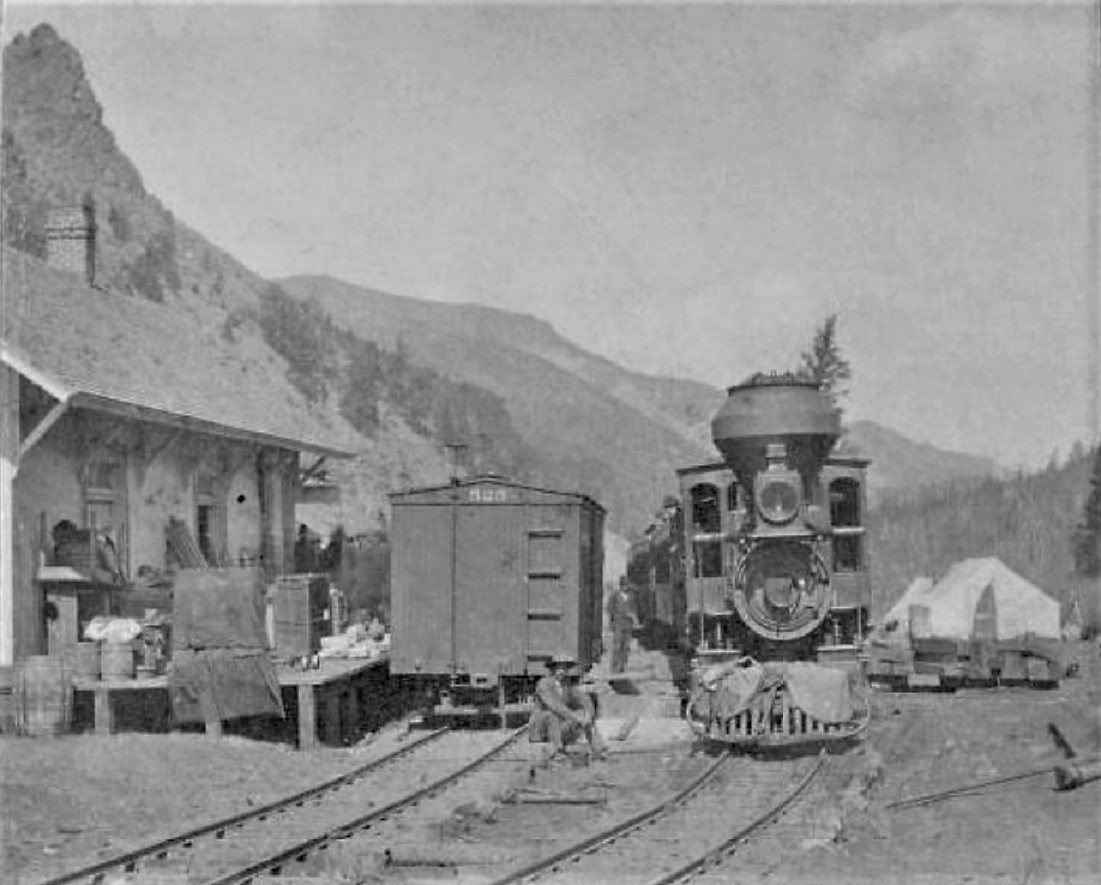 And the Jackson view of 1887 doesn't show any small outbuilding near the depot: http://digital.denverlibrary.org/cdm/singleitem/collection/p15330coll21/id/12604/rec/25 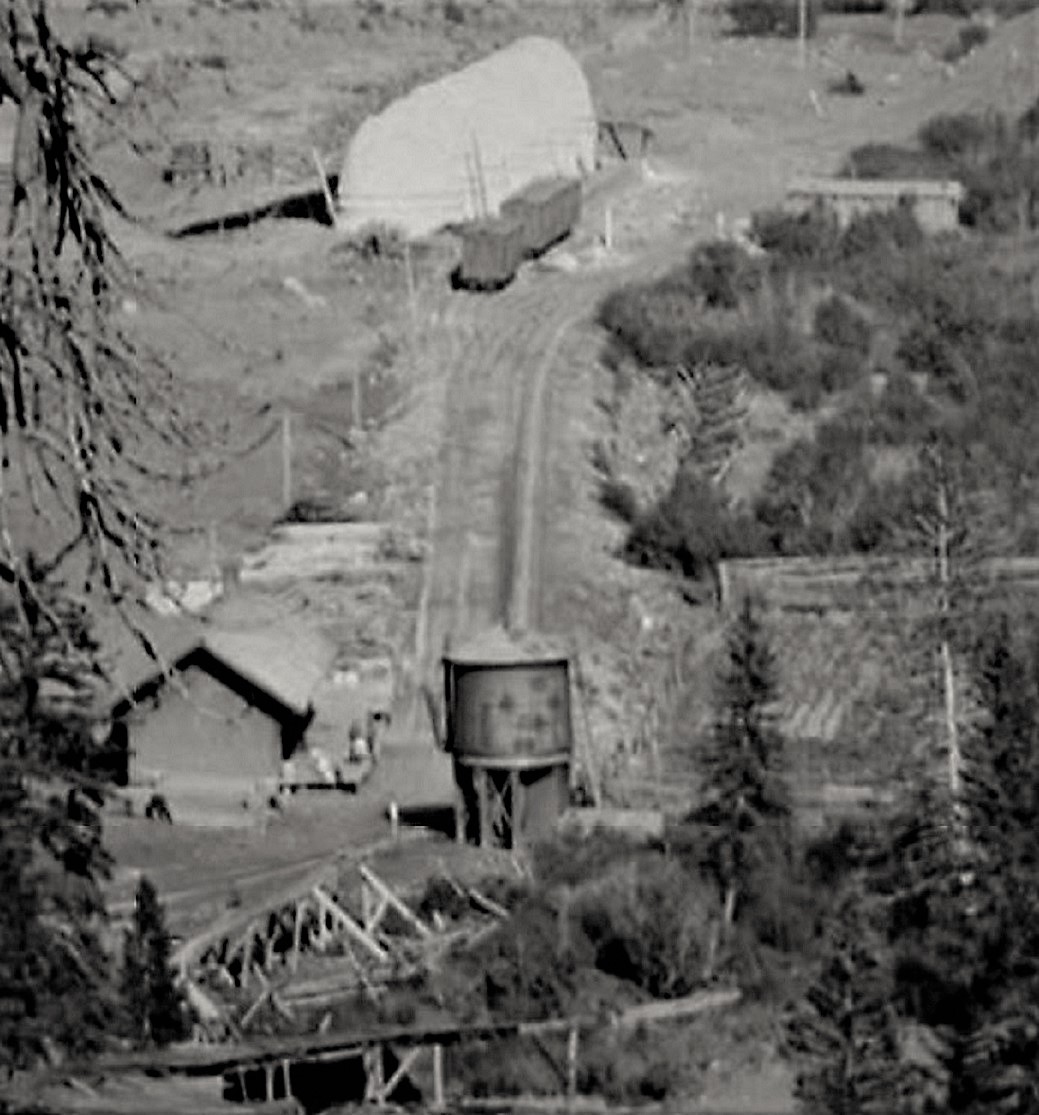 A digression from topic: Is that one of the tall, outside-braced DSP&P charcoal boxcars at the far end of the spur near the beehive charcoal ovens? So, when in doubt, consult Mac Poor. Poor states that the original depot measured 20 x 60 feet, making it the largest depot in Platte Canon. (Dome Rock was 18x24, Buffalo 16x40, Pine 24x38, Estabrook 18x24, Baileys 16x40, Kenosha 16x24 and Jefferson 20x44). Only Breckenridge (24x60) and Dillon (24x80) were larger frame depot structures than Webster. Mac Poor goes on to solve the mystery: "Depot burned in 1903 and was rebuilt the following year." So that explains why Webster ceased to be an operating depot by the time of the 1906 Employees Timetable. The original large depot at Webster burned down and was replaced with a smaller freight house structure at the same location, just inside the beginning of the siding's curve to the northwest. That structure is the one visible in the 1928 to 1936 photos above. Thanks, Robert!
Jim Courtney
Poulsbo, WA |
|
Poor had it wrong. The 1879 Webster depot was moved to Denver for use by the D&RG, and then moved to Como. Hello ? Connect the dots here, people ! 
"Duty above all else except Honor"
|
|
This post was updated on .
In reply to this post by Jim Courtney
Yes Jim,
In checking my B&B books, Webster originally had a Combination depot 20 x 60 with Office 17 x 18, Kitchen 8 x 12, Bed room 10 x 12 and Freight Room 18 x 27. No mention of a Waiting Room. In the DL&G book there is a hand written notation, Burned, Dec. 1903 Below is is another hand written notation New Depot, May, 1904 16 x 16. EDIT # 1--------------------- The valuation shows Depot 12.3 x 16.2 x 10-4 eaves. Painted in and out. No individual rooms or floor plan is shown, just one 3'x7' door and two 2'x5'10 windows, 8 lights, double hung. It also shows the 14 x 20d tank. Rick |
|
Thanks for the confirmation, Rick.
Any info in your B&B book as to the water tank burning with the depot or being moved at a later date? This 1930 DPL view seems to suggest the water tank was moved back to the east a bit when compared to the 1887 Jackson view. The conical roof is now flat, can't tell if the frost box location is changed: http://digital.denverlibrary.org/cdm/singleitem/collection/p15330coll22/id/13329/rec/1274 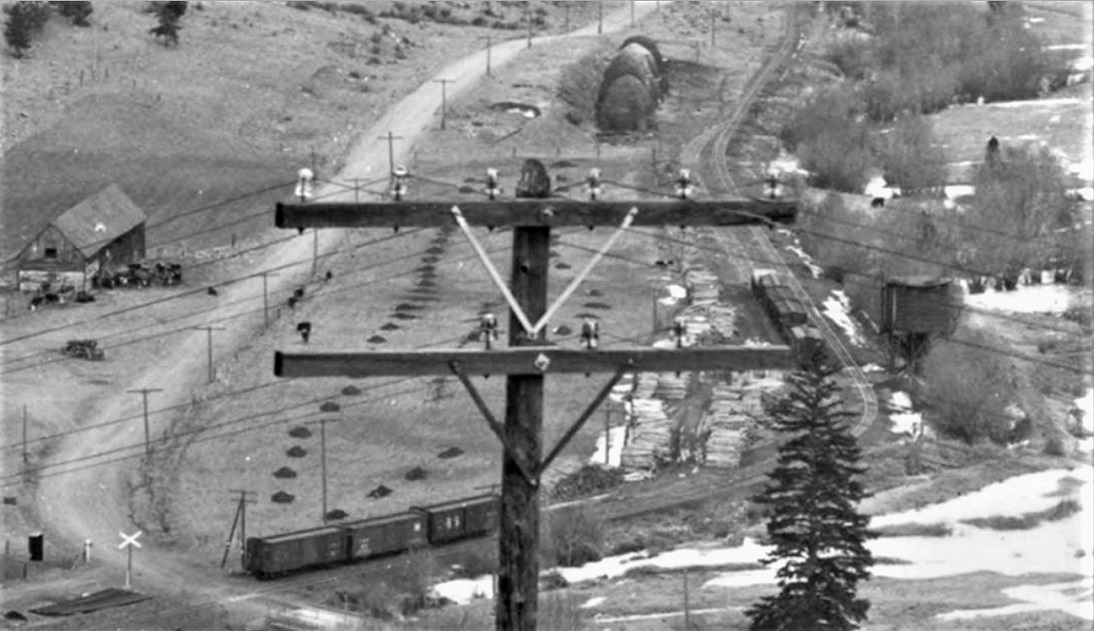 The little freight house isn't immediately visible, may be hiding behind the lower right cross arm of the telegraph pole. (And lots of insulators for South Park to study!) 
Jim Courtney
Poulsbo, WA |
|
In reply to this post by Jim Courtney
Check out DPL photo X-14031 which shows a second building behind the depot and a different location for the water tank.The later photo with the Bogie and the Charcoal car show the second building gone but a definite spot where it had been-water tank has been moved and rebuilt. There is a newspaper engraving of Webster that has been posted on one of the groups-I think there was a copy for sale on Ebay which shows the depot and the other building together.
|
|
In reply to this post by Jim Courtney
Actually, the tank looks in about the proper place according to the valuation map. My B&B Books end about 1910-1912... and they are South Park only, dammit, because I would love to have the "Mountain Division" as the Colorado Central Clear Creek lines were known (go figure).
I would doubt that the freight house was there by the 1930's mainly because Webster was just a way station by then. Even the Charcoal Ovens were abandoned. Rick |
|
I dunno, Rick.
In the 1887 Jackson view, the conical roofed tank appears (to me) to be on the outside convexity of the mainline curve, while in the 1930 view, the flat roofed tank seems to be back on the tangent that leads into the curve, like on the valuation maps. And here is the DPL photo that Robert referred to, showing the original small water tank, located inside the curve of the siding: http://cdm16079.contentdm.oclc.org/cdm/fullbrowser/collection/p15330coll22/id/13327/rv/singleitem 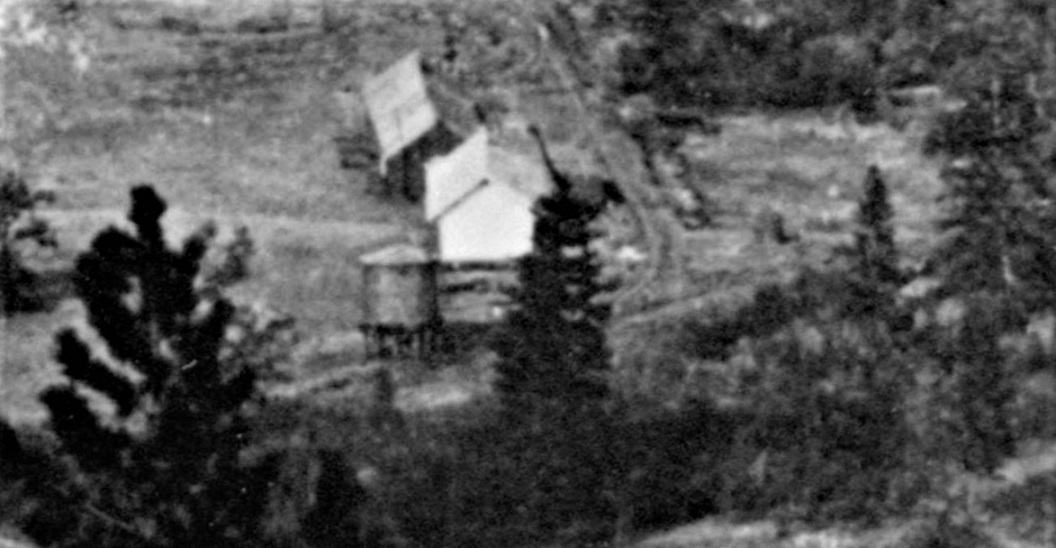 I would doubt that the freight house was there by the 1930's mainly because Webster was just a way station by then. Nope, the 1936 photo at the very top of the tread shows the little freight house still there -- unless we have to explain a third building. BTW, in the 1930 view down on Webster, what's with all the mounds of earth in the pasture inside the curve of the siding. They also show up in the 1929 view as well. Giant gophers?? 
Jim Courtney
Poulsbo, WA |
|
This post was updated on .
In reply to this post by Robert McFarland
Last nights Homework assignment from Robert:
 EDIT:apparently I was a little late handing it in...  X-14031 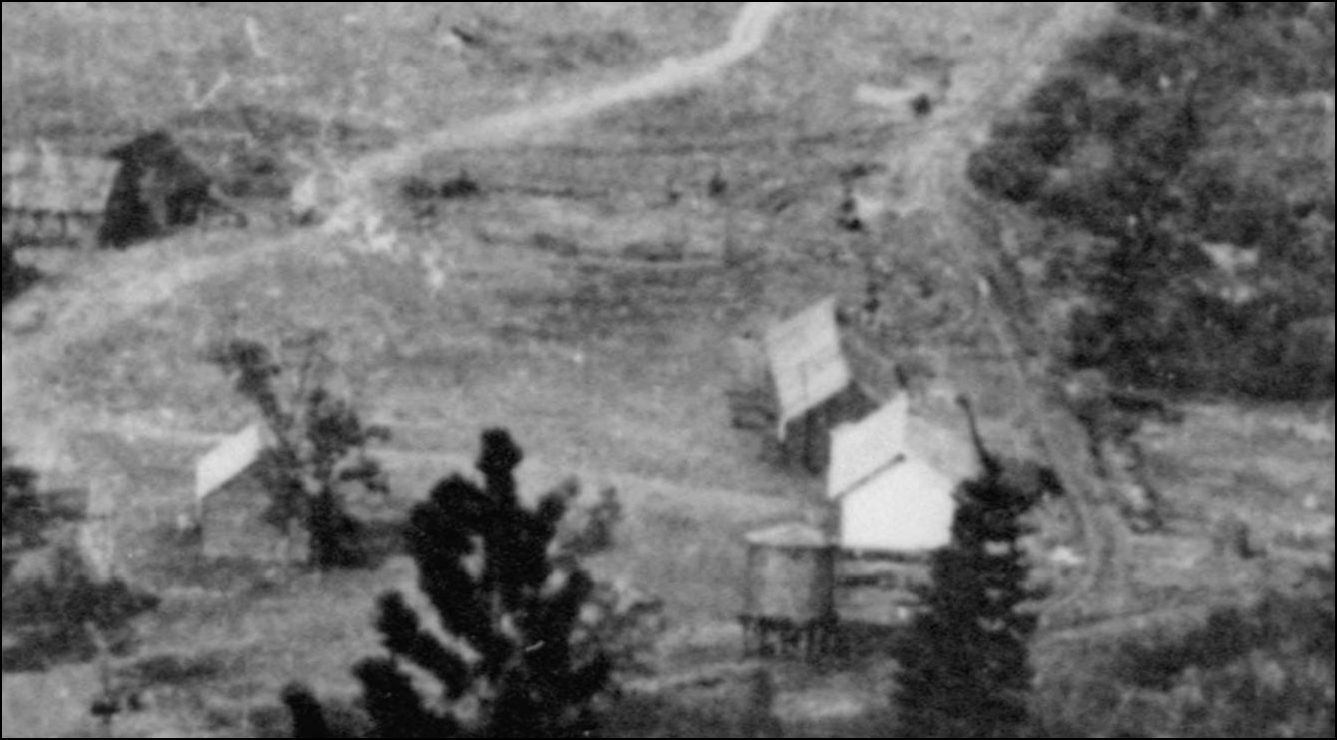 http://digital.denverlibrary.org/cdm/fullbrowser/collection/p15330coll22/id/13327/rv/singleitem/rec/1 Sorry, no Tank in this early WHJackson view 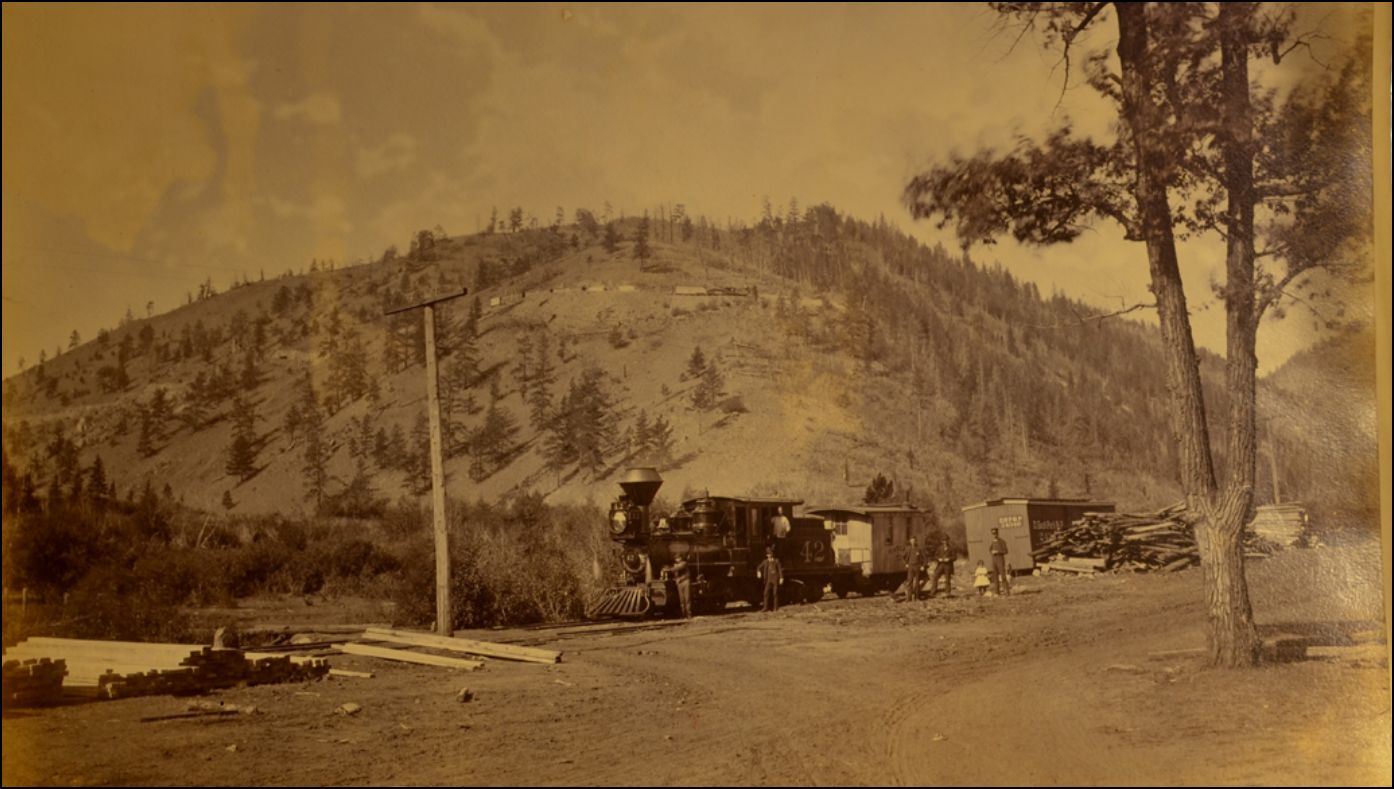 Consolation prize OP-6337 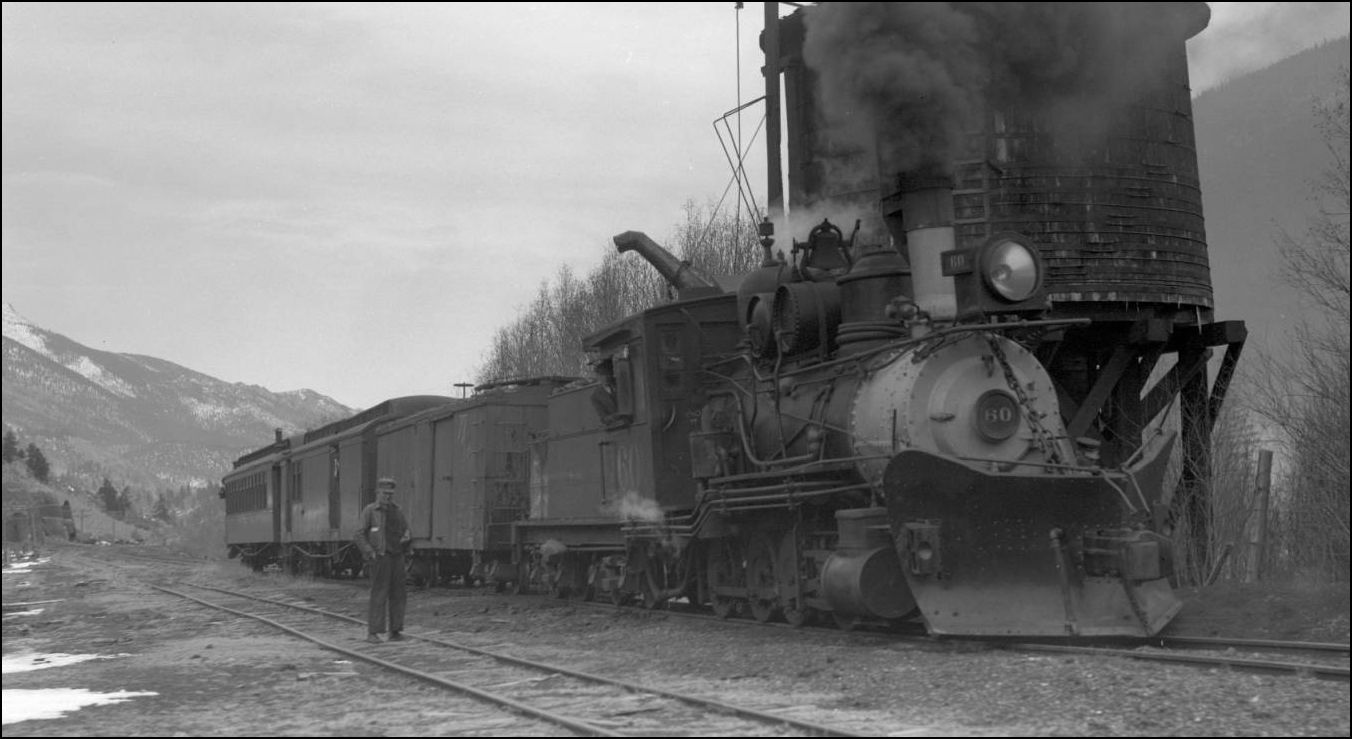 http://digital.denverlibrary.org/cdm/fullbrowser/collection/p15330coll22/id/42523/rv/singleitem/rec/461
UpSideDownC
in New Zealand |
|
In reply to this post by Jim Courtney
Remember Jim,
I am going by the 1886 and 1894 B&B books with verification using the 1917 Valuation. If the tank was moved, there is no notation of it moving. I think that a field trip to look for the original base, if the tank was moved (and I'm not saying that it wasn't) or using Google Maps might give you a little better idea. Rick |
|
In reply to this post by Jim Courtney
Can someone show where Webster is at on google maps?
Would like to see where you all are talking about. 
|
|
In reply to this post by Jim Courtney
Oh wait.. I think I found it.
39.456739, -105.721033 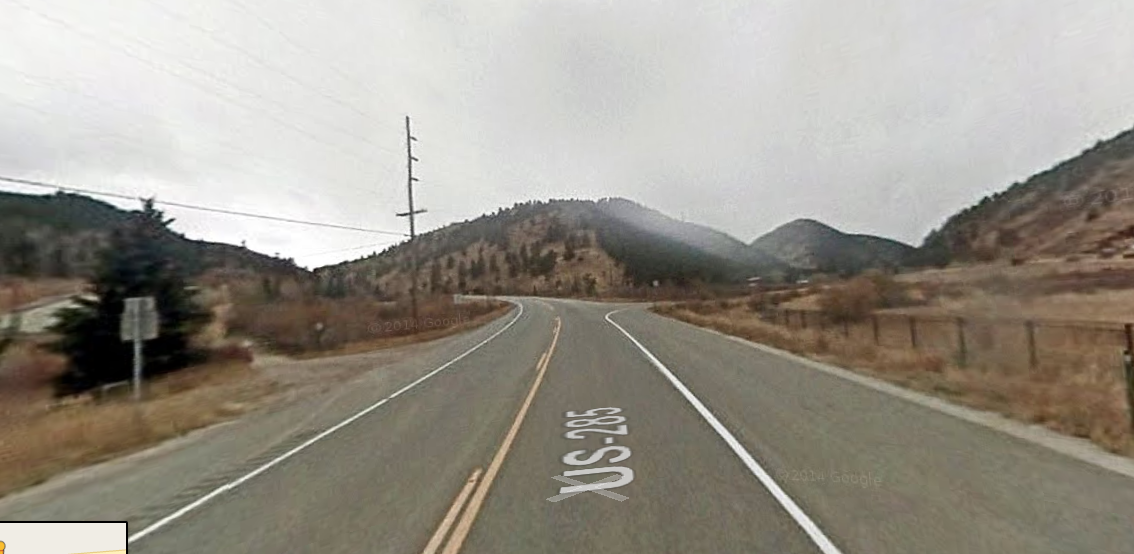 https://www.google.com/maps/@39.4568036,-105.7208471,3a,75y,261.98h,97.58t/data=!3m6!1e1!3m4!1sWG-ZCO-cWpidC9ODYR-Scg!2e0!7i3328!8i1664 |
|
This post was updated on .
In reply to this post by Jim Courtney
I found what I think is what is left over from a water tank. Matches that Map.
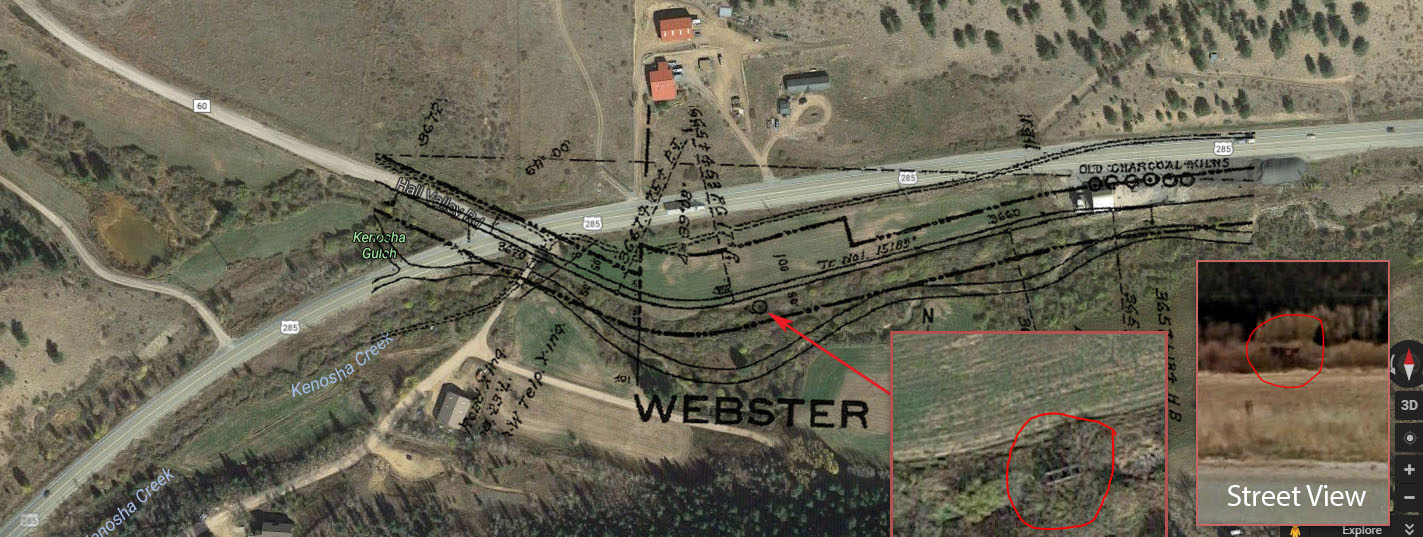 Not saying my oeverlay is perfect. But real close. Unfortunately it looks like there would be no physical evidence left at this time of any buildings or water tank on the inside of the curve. As it is a flat filed of wheat or something now. That was fun. |
|
In reply to this post by Jim Courtney
And the more I look at this stuff.
I am feeling fairly confident this long building is in the same location as the one in the old photo. 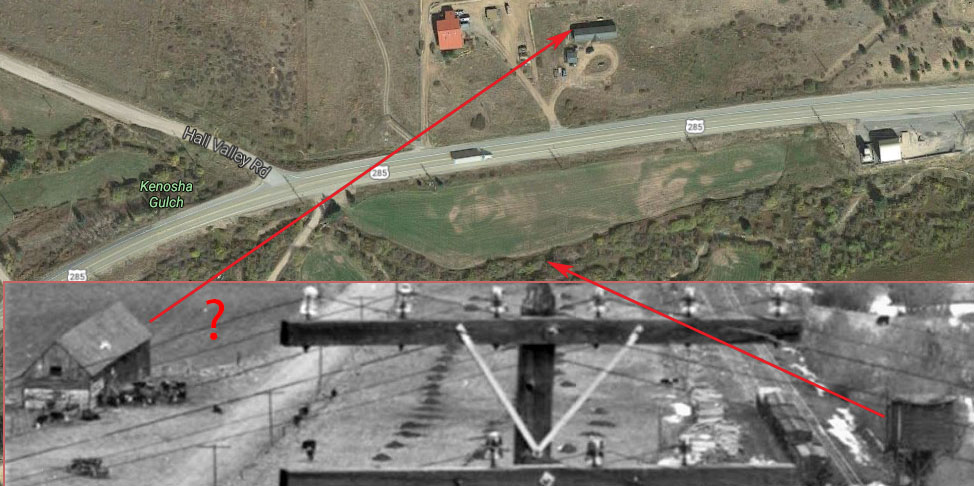
|
|
In reply to this post by Don Gustavson II
As Robert hasn't asked about it yet....
I'm rather intrigued with the Sawmill. Note the rather substantial trestle across the South Platte, I'd be thinking this for a tramcart rather than a railway siding since the structure seems elevated to a higher level. Just what the arrangements were for getting the cut lumber across the Mainline to the waiting Coalcar on the housetrack, a barrow cart or transfer to horsedrawn cart? CHS.J3912 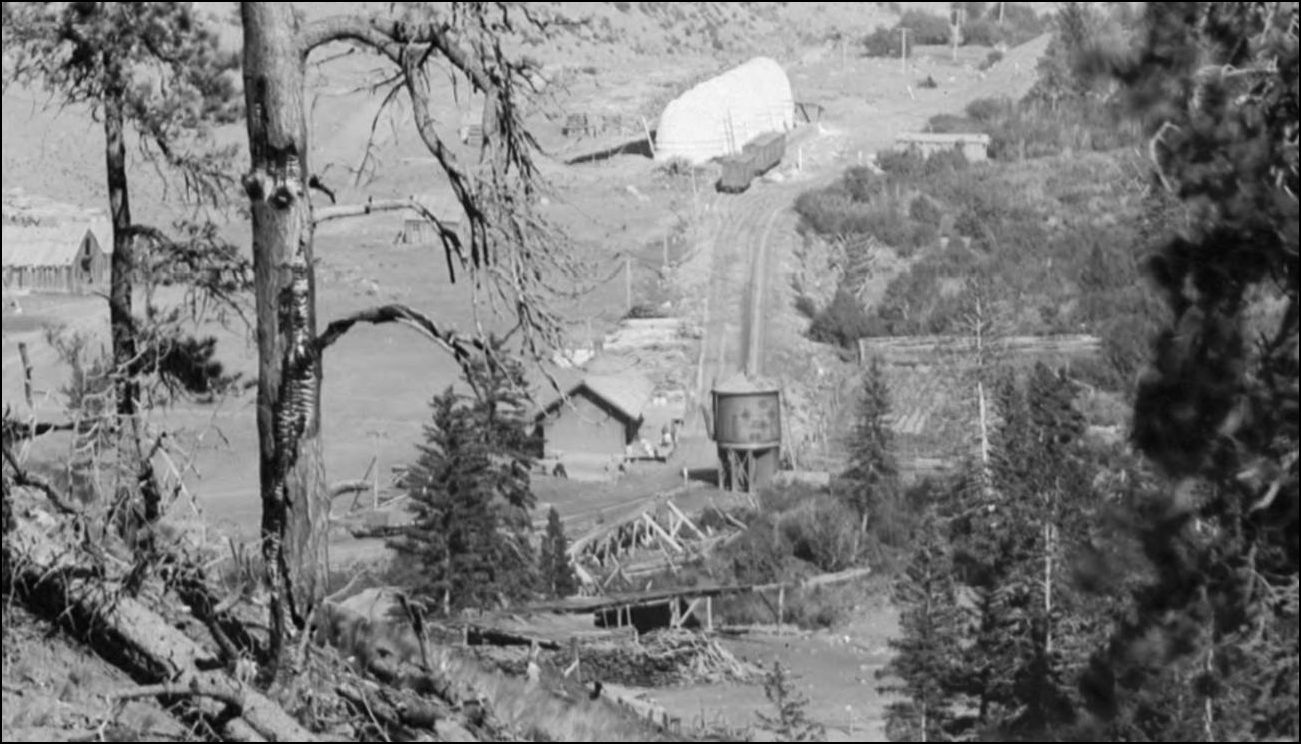 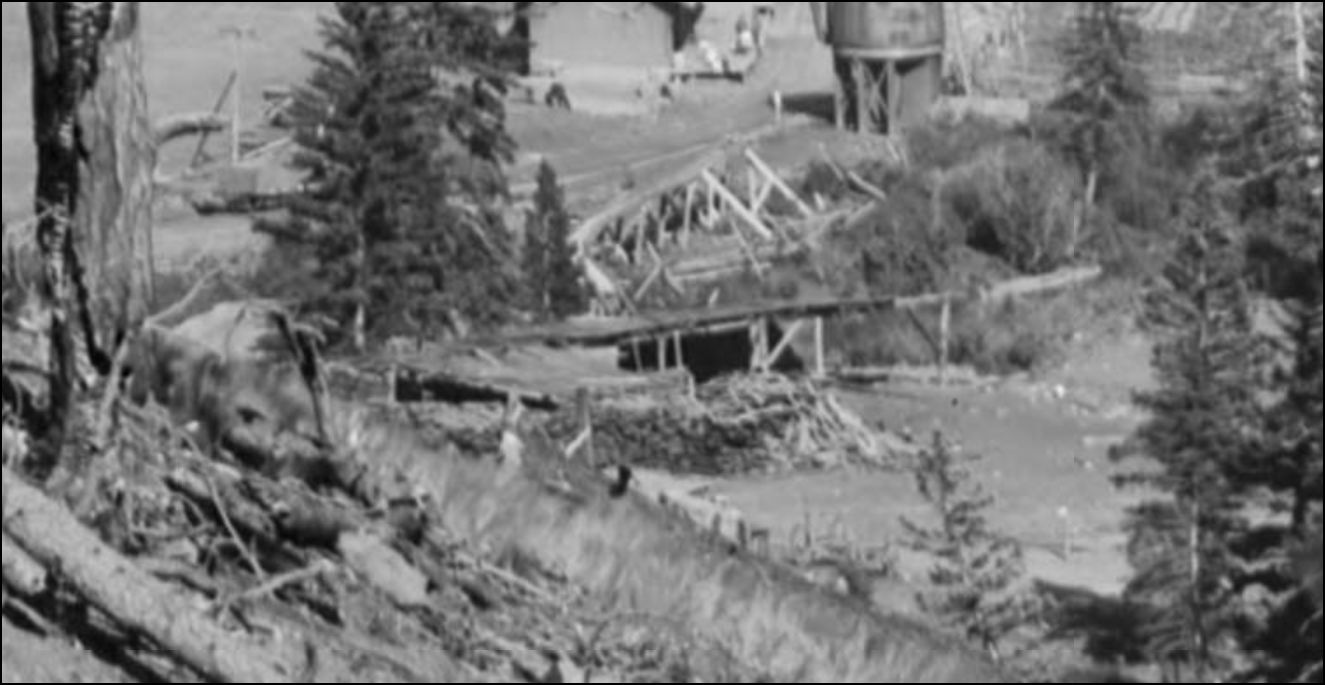 http://digital.denverlibrary.org/cdm/fullbrowser/collection/p15330coll21/id/12604/rv/singleitem/rec/1
UpSideDownC
in New Zealand |
|
In answer to Don the long building in the color photo is of very new construction. That barn in one of the other photos posted, did you note the cattle in front of it? Someone most likely cleaned out the manure that was in the barn, put it in the pasture for fertilizer to be spread around at a latter date.
Tom Klinger |
|
In reply to this post by Jim Courtney
(And lots of insulators for South Park to study!)
Interesting in that what appears to be a CD 126 "blobtop" on the upper leftmost pin position was a very NOT-South Park insulator. Another appears in a recent photo of the west portal Alpine Tunnel snowshed. These date from the late 70's and 80's and were typical D&RG glass, but not on the SP. The next piece right is a more typical 126.4 made by Hemingray. I have found these along the line all the way from Platte Cañon to Gunnison. They post-date the original construction, but are early replacements. The next four across the top are hard to ID. The first three look like CD 152's, while the far right piece looks bulkier, like a 154. These are likely Hemingray No. 40's and a 42, introduced in 1912 and 1921 respectively. Note the HEAVY tie wire on the first insulator to the right of the pole top. Probably a splice/wrap from a broken line wire. The bottom arm holds left-to-right two beehives (shaped like the beehive kilns in the valley below) and another Hemingray No. 40. While it may be obvious for other reasons, this pole construction tells us it was after the summer of 1919, when Western Union took over the line and rebuilt it from the SP's 4-wires to the 9 you see here. Added were WU's through wires to Salt Lake City that had formerly routed via Pueblo and the Arkansas River on D&RG poles. The reason the pole line through to Buena Vista remained decades after the rails were pulled beyond Garos was because of WU ownership and the short route to SLC. In fact, the line remained in service after the whole NG C&S system was pulled up.
"Duty above all else except Honor"
|
«
Return to C&Sng Discussion Forum
|
1 view|%1 views
| Free forum by Nabble | Edit this page |

